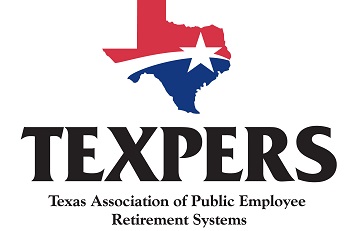By JOE GIMENEZ/guest blogger
The Pension Review Board is mandated by the state legislature to oversee all Texas public retirement systems in regard to actuarial soundness and compliance with state law. PRB Deputy Director Michelle Downie-Kranes walked members through areas where the laws don’t mesh with the Board’s revisions to guidelines, changed actuarial standards, or pragmatic observations by staff.
> 10 POLICY ISSUES: Download PRB Report
Downie-Kranes noted how HB 3310 was enrolled in 2015 and required funding soundness restoration plans (FSRP), for plans exceeding 40-year amortization periods after several actuarial valuations. The Pension Review Board in 2017 changed its recommended guidelines from 40- to 30- years, with a preferred target below 25-years, and it allowed a seven-year implementation schedule. Other organizations have also recommended 30-year or lower amortizations periods. The law still triggers at a 40-year period. If changed to 30-year amortization, 35 systems could eventually become subject to FSRP requirements.
HB 3310 has also been criticized by PRB Actuarial Committee member Marcia Dush because it allows too much time between systems’ first actuarial valuations above 40 years and the requirement to develop a FSRP. Dush has said that plans get a de facto 50-year period to correct their plans because of the way the statute is written.
Downie-Kranes drew particular attention to systems which revised their FSRPs because their first plan did not appear to be working.
“Currently 10 out of the 18 FSRP plans have required a revised FSRP because the original plan would no longer reach a 30-year amortization period within the 10-year allotted time frame," she said. "One system requires a second revised plan. For some of these systems it can almost appear as if they are in a perpetual FSRP-cycle to achieve a 40-year amortization period.”
TEXPERS Input
During the meeting Downie-Kranes acknowledged a letter from TEXPERS Executive Director Art Alfaro offering analysis of PRB data. A TEXPERS study shows that plans have made significant progress toward achieving the PRB’s recommended guidelines.
For example, there are now 49 plans in the PRB’s recommended zone below 25 years, compared to 34 plans in 2015. The improvements occurred even as nearly all Texas plans decreased their target rates in line with PRB suggestions. While downward revisions to target rates can cause amortization periods to increase, most systems seem to be handling it well.
Alfaro’s letter said that six of the first 14 systems required to produce FSRPs now have amortization periods below 40 years, three have achieved lower amortization periods but are not below 40, and five have not achieved lower amortization periods. Twelve of the first 14 systems lowered their annual target rates below eight percent.
“In sum, we agree with [the PRB] that more can be done by plan sponsors to address chronic underfunding of some systems,” Alfaro wrote. “But we also think that adjusting HB 3310 so that more systems must develop FSRPs is rushed. Pension systems need time for their investment, contribution, and workforce dynamics to show in actuarial numbers. The 3- to 4-year implementation period which has been granted by the PRB for the 10-year time frame of HB 3310 needs the opportunity to accomplish its original intent. Waving a magic wand for intermediate-term results is not realistic.”
Alfaro’s letter said that six of the first 14 systems required to produce FSRPs now have amortization periods below 40 years, three have achieved lower amortization periods but are not below 40, and five have not achieved lower amortization periods. Twelve of the first 14 systems lowered their annual target rates below eight percent.
“In sum, we agree with [the PRB] that more can be done by plan sponsors to address chronic underfunding of some systems,” Alfaro wrote. “But we also think that adjusting HB 3310 so that more systems must develop FSRPs is rushed. Pension systems need time for their investment, contribution, and workforce dynamics to show in actuarial numbers. The 3- to 4-year implementation period which has been granted by the PRB for the 10-year time frame of HB 3310 needs the opportunity to accomplish its original intent. Waving a magic wand for intermediate-term results is not realistic.”
Additional Issues
Downie-Kranes also described situations where staff needs clarifications from lawmakers as to how to gauge certain elements contained in FSRPs. For example, to what extent should future actions be allowed in an FSRP? Her report noted where systems will indicate they will make benefit changes, but need members to vote their approval. Or the FSRPs feature contribution increases not yet approved by the sponsor.
Another potential issue to PRB staff and Board members is that SB 2224 required systems to submit a funding policy that achieves 100 percent funding. Thirteen plans with actuarial determined contributions submitted funding policies with open or rolling 10-, 30-, and 40-year amortization periods. The Board does not consider that open/rolling plans will ever achieve 100 percent funding and therefore are not compliant with SB 2224. In early June, the PRB sent letters to those systems expressing its desire “to learn how the plan’s funding policy would help achieve 100% funding while utilizing a benchmark that resets annually and therefore not designed to move towards 100% funding.”
After the meeting, Alfaro said, “It is clear that the Pension Review Board will ask the legislature for substantial changes to these laws. Our membership and their city sponsors need to participate in this process now.”



No comments:
Post a Comment